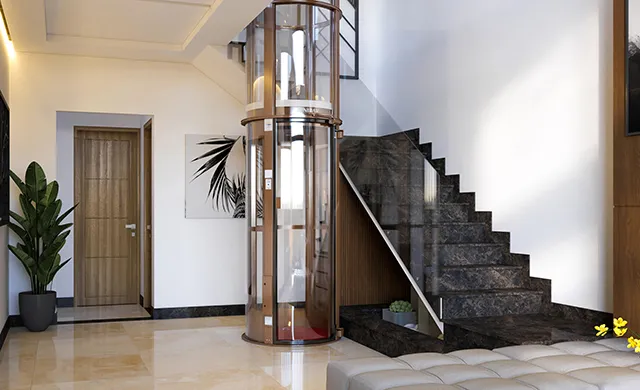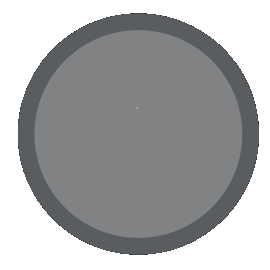
Families in Malaysia—from Kuala Lumpur bungalows with multiple storeys to hillside homes in Penang and modern villa clusters in Johor Bahru—are redefining everyday convenience. Stairs are not the only option to travel between levels. A household elevator provides comfort, safety, and style in one, offering mobility for grandparents, children, and everyone else in between.
A home lift was once considered a luxury, but the benefits now outweigh the cost. Through compact engineering, energy-efficient operation, and modular installations, household lifts fit elegantly into new builds and retrofits. Everything from the effect of size and usage on household elevator prices is clear and easy for Malaysian homeowners to plan.
This guide will show you why a home lift is a wise lifestyle choice, how modern technology makes it safer and greener, what goes into pricing a lift, and how to make the best long-term decision for your family.
Table of Contents
- 1) Why Malaysian Families Are Choosing Household Elevators
- 2) Technology That Fits the Home, Not the Other Way Around
- 3) Safety, Safety, Safety — Certified, Tested, and Built for Peace of Mind
- 4) Created to Impress: Light, Space, and Modern Looks
- 5) Space & Installation
- 6) Understanding Household Elevator Pricing (Without Guesswork)
- 7) The Cost of Ownership: More Than the Purchase Price
- 8) Real Scenarios: Which Option Is Right for Me?
- FAQ
- 10) How to Decide on Model and Pricing — A Simple Checklist
- Smarter, Kinder Homes -Today and Always
1) Why Malaysian Families Are Choosing Household Elevators
Multigenerational living is very common in Malaysia. Often, families live together with several generations under one roof—including grandparents, children, and adults working full-time. A lift provides independent access to all levels for everyone—no detours, no strain, no compromise.
1.Safety & dignity: Aging seniors and recovering patients can travel throughout the home without assistance.
2.Daily conveniences: No more carrying groceries, laundry, luggage, or strollers between floors.
3.Future-proofing: Plan once and live comfortably for decades—ageing in place can be dignified too.
4.Property value: A quality, installed household elevator is a hallmark feature that buyers notice, often creating more interest when it’s time to resell your property.
2) Technology That Fits the Home, Not the Other Way Around
Current household lifts are designed for the home and are not adapted from high-rise commercial applications. Nibav’s approach focuses on four ideas to simplify installation and everyday living:
1.Air-Driven Engineering
Using pneumatic pressure to operate, the lift consumes electricity only during ascent and uses zero power on descent. No oils or lubricants. Whisper-quiet and eco-responsible.
2.Self-Supported
The shaft and cabin are a single, self-supported form. No pit, no machine room, and no heavy civil work. This is designed for the Malaysian retrofit market and compact footprints.
3.Modular, CKD Design
All components are pre-engineered as a kit that arrives ready for assembly, allowing tidy installations in just a few days, with minimal inconvenience to you and your home.
4.Compact Footprint
A circular or near-circular plan with a panoramic form allows lifts to be inserted into corners, stairwells, and lightwells—preserving precious floor area while allowing extra light to enter.
3) Safety, Safety, Safety — Certified, Tested, and Built for Peace of Mind
For families, safety is not a feature; it is fundamental. Nibav Malaysia’s manufacturing complies with ISO 9001:2015 Quality Management and is TÜV NORD Certified, reflecting rigorous process control and a history of quality, reliability, and product safety.
Built-in safety layers include:
1.Automatic descent to the nearest floor in the event of a power cut.
2.Child lock and overload protection to prevent misuse and unsafe loads.
3.Emergency alarm/intercom, lighting, and ventilation for rider comfort.
4.Precision leveling for smooth arrivals and confident entry and exit.
These safeguards function quietly in the background to make the lift user-friendly for all family members.
4) Created to Impress: Light, Space, and Modern Looks
A household elevator should enhance more than movement; it should enhance your interior style. Nibav’s panoramic cabin uses polycarbonate (a material that is up to 250× stronger than standard glass) to invite natural light and a sense of spaciousness.
Design features:
- 360° views with smoked or clear options.
- Ambient lighting and optional star-light ceilings for a serene, premium feel.
- Refined finishes (metallic, matte, wood-tone accents) that suit Malaysian interior palettes.
- Screw-less visual continuity and clean lines for a minimalist aesthetic.
Whether your tastes are tropical contemporary or urban sleek, the lift reads as an architectural element rather than an afterthought.
5) Space & Installation
Traditional shafts, deep pits, and upper machine rooms are not feasible for many Malaysian homes. Nibav’s self-supporting system changes the equation:
- No pit and no machine room required — just a flat floor and standard height clearance.
- Flexible installation — corners, mezzanines, mid-landing spaces, or near the stair.
- Quick, tidy installation — modular assembly typically completed in a few working days.
- Reversible — if your family’s needs change, you can relocate or upgrade later.
This is why household lifts are now an option for renovated terrace homes, semi-Ds, bungalows, and penthouses.
6) Understanding Household Elevator Pricing (Without Guesswork)
You’ll see many numbers online; responsible planning starts with what drives the cost. Instead of generic figures, here are the main factors influencing household elevator prices in Malaysia:
A) Home & Layout Factors
- Number of stops (e.g., G+1 vs G+2 or G+3).
- Travel height and installation access to the structure.
- Placement complexity (tight corners, stair turns, ceiling rework).B) Product Configurations
- Cabin size (standard vs larger).
- Door style (manual vs auto — where available).
- Finish & interior (standard vs premium trims, smoked panels, engraving).
- Smart options (app visibility, display, special lighting).C) Site & Logistics
- Access constraints (condo rules, hoisting limits, lift-in sequence).
- Electrical supply (dedicated circuit, minor prep work).
- Timeline (expedited schedules).D) After-Sales & Warranty
- Coverage terms (components with extended or lifetime coverage).
- Service plan (preventive maintenance, response times, parts availability).
Tip: A transparent quotation will break down these areas so you understand how each item contributes to your total.
7) The Cost of Ownership: More Than the Purchase Price
Smart families look at the total cost of ownership, not just the quote. Air-driven household lifts are designed to be economical over time:
- Energy: Electricity is used only when going up; none when descending.
- Maintenance: No oil; fewer moving parts means less wear and tear.
- Durable construction: Aluminium and galvanised steel withstand humidity and resist corrosion — ideal for Malaysia.
- Resale value: Future buyers view lifts as a quality-of-life feature, often increasing saleability.
When considering household elevator prices, include lifetime factors: utility costs, service intervals, warranty value, and resale potential.
8) Real Scenarios: Which Option Is Right for Me?
Scenario A: Terrace Home, G+1
A compact electric lift near the stairway makes everyday life easier — groceries, prams, and assisting elderly parents are effortless. Minimal rework and a quick, pre-engineered installation go a long way.
Scenario B: Bungalow with G+2/G+3 Height
A slightly larger cabin for family use, with premium finishes and lighting. Centrally located as a statement piece linking all floors visually and functionally.
Scenario C: Penthouse or Duplex
A panoramic cabin placed in a double-height void near the stairwell offers both drama and utility. Quiet operation preserves the calm of premium interiors.
Scenario D: Interior Retrofit with Tight Corners
A compact, self-supporting structural frame with pre-assembled modules allows installation where a conventional shaft may not be feasible — with no heavy civil work or major disruption.
FAQ
Q1. Can a household elevator be installed in an existing dwelling?
Yes. The self-supporting structure and modular components are ideal for retrofits with no pit and no machine room required.
Q2. How long does installation take?
Typically a few working days once on site, thanks to pre-engineered components.
Q3. What happens during a power cut?
The system is designed to descend automatically to the nearest landing, allowing you to exit safely.
Q4. Is it efficient?
Yes. Air-driven lifts use electricity only when going up, with no power required for descent — lowering running costs.
Q5. Are there certifications?
Nibav Malaysia is manufactured under ISO 9001:2015 and is TÜV NORD Certified, indicating rigorous safety and quality processes.
Q6. How much room is needed?
Usually just a compact footprint with standard height clearance. Your consultant will verify exact dimensions for your layout.
Q7. What most affects household elevator prices?
Number of stops, cabin size, finishes, placement complexity, and after-sales coverage are the biggest drivers.
10) How to Decide on Model and Pricing — A Simple Checklist
Use this checklist to align features with budget and lifestyle.
Necessary (Function & Safety)
- Number of stops and travel height aligned to daily use.
- Built-in safety: auto descent, child lock, overload protection, intercom, lighting.
- Certifications (ISO 9001:2015, TÜV NORD).
Desirable (Comfort & Design)
- Ambient/star-light ceiling, smoked panels, finish upgrades.
- App visibility or display options (where applicable).
- Seating for seniors.
Fit (Practicality)
- Corner/stairwell placement to preserve circulation.
- Minimal rework for a cleaner timeline and cost.
- Electrical provisions prepared in advance.
Value (Ownership)
- Clear, itemised household elevator prices.
- Preventive maintenance plan with response commitments.
- Warranty clarity on applicable components.
Smarter, Kinder Homes -Today and Always
A household elevator is more than a convenience; it’s a daily expression of care — for elders, for kids, for yourself. It ensures that every level of your home is livable, beautiful, and ready for the future.
With air-driven efficiency, a self-supporting compact design, and rapid modular installation, household lifts now belong in the mainstream of Malaysian homes. And as you evaluate household elevator prices, consider what goes beyond the sticker: energy savings, maintenance simplicity, warranties, and the joy of effortless movement.
Nibav Malaysia proudly meets ISO 9001:2015 and TÜV NORD certification standards, combining elegant design with dependable engineering for Malaysian families and Malaysian homes.
If you’re planning your dream build or upgrading the home you love, this is the time to make movement effortless.
Elevate your everyday life with Nibav Malaysia.
